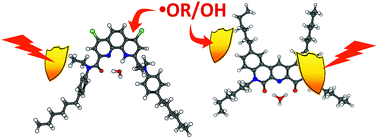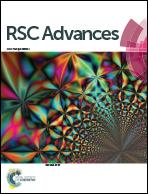Testing a simple approach for theoretical evaluation of radiolysis products in extraction systems. A case of N,O-donor ligands for Am/Eu separation†
Abstract
In this paper, we studied the irradiation and ageing effect on the extraction properties of N,N′-diethyl-N,N′-di(p-hexylphenyl)-1,10-phenantroline-4,7-dichloro-2,9-dicarboxamide (1) and 2,5,9,12-tetra(n-hexyl)-benzo[f]quinolino-[3,4-b]-[1,7]-naphthyridine-6,8(5H,9H)-dione (2) towards Am(III) and Eu(III). DFT calculations were applied to estimate the probable ways of radiolysis for (1) and (2). Degradation products were identified by high-resolution ESI-MS. The interaction of (1) and (2) with the products of solvent radiolysis was established to be the most probable mechanism of ligand destruction.



 Please wait while we load your content...
Please wait while we load your content...